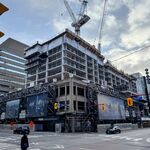Northern Light
Superstar
I 100% appreciate all the effort you're putting into this, and do find it interesting.
But I think the control city or town(s) remain key.
The utility of information is that it is actionable.
For information to be actionable it has to show that change is both necessary and possible.
What could we do different? What should we do different? How do we do that?
Elsewise the information is merely trivia.
But I think the control city or town(s) remain key.
The utility of information is that it is actionable.
For information to be actionable it has to show that change is both necessary and possible.
What could we do different? What should we do different? How do we do that?
Elsewise the information is merely trivia.




